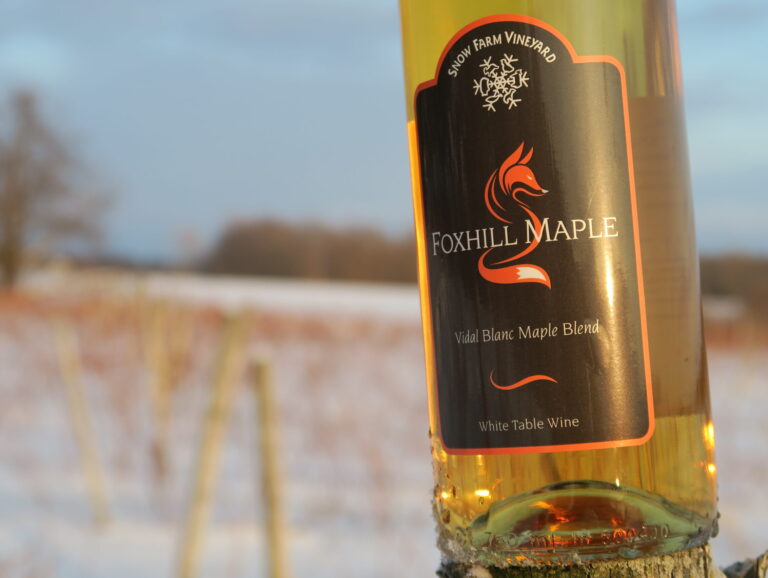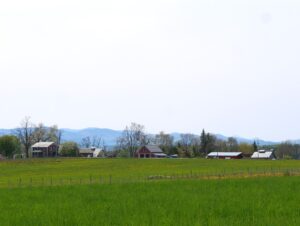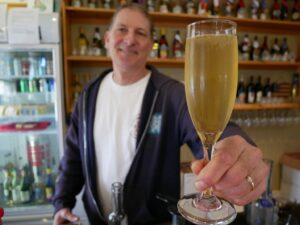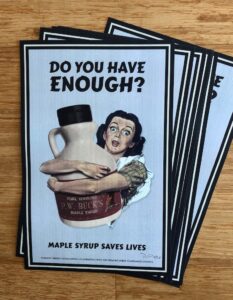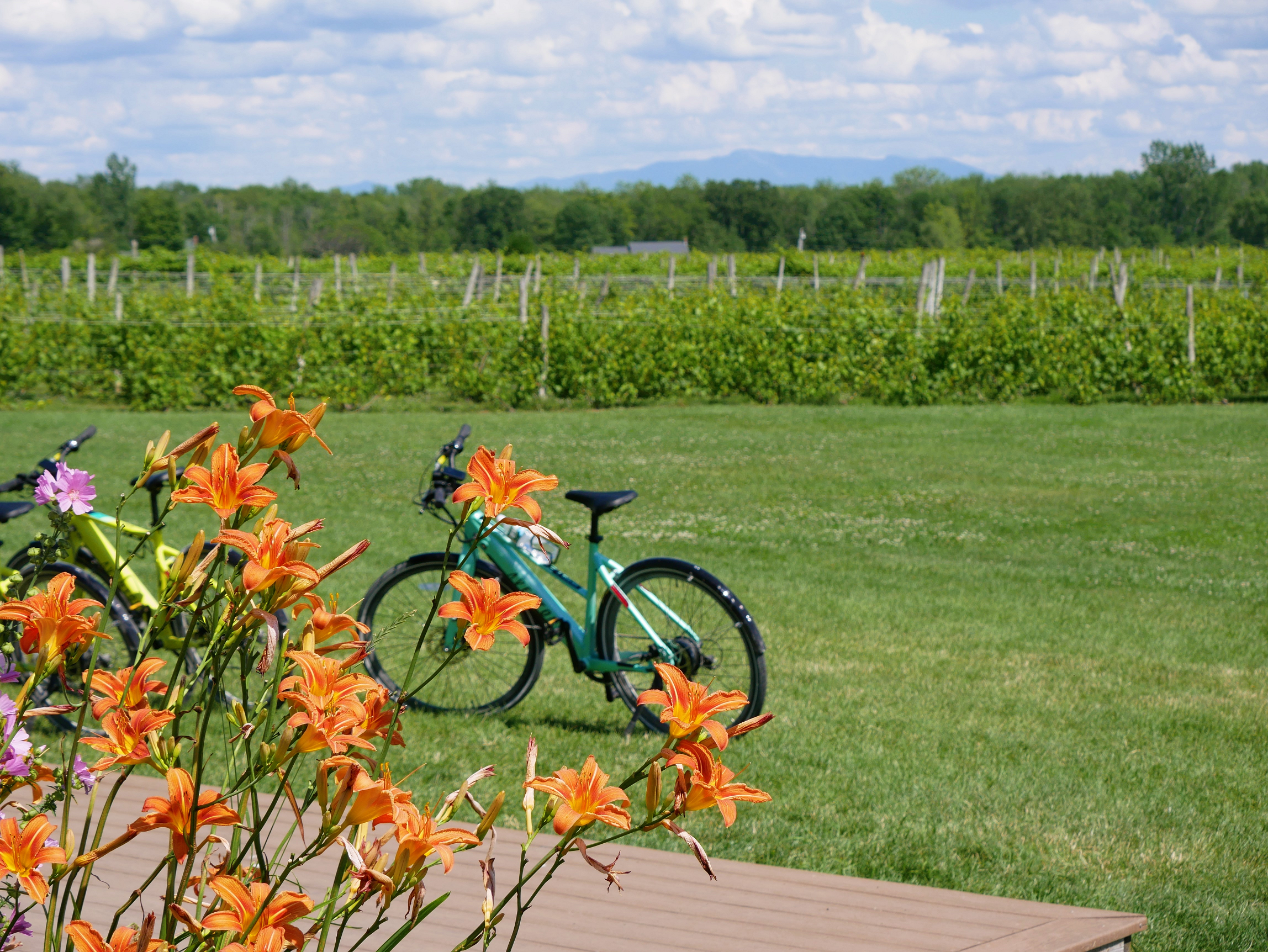The Vermont wine scene is young in the wine world. Places like Italy have a history of winemaking that dates back over 4,000 years. The first vineyards in California were planted over 200 years ago. So, how did a small state like Vermont, with about 25 years of winemaking under it’s belt, come to make world-class wines in such a short time?
How Vermont Wines Got on the Map
Vermont wines are for people who appreciate local agriculture and want to feel deeply connected to their winemaker. Our success at Snow Farm Vineyard lies in our deep appreciation for our land, climate, and growing season. Our Vermont wines stand out because they’re made using locally grown cold-hardy grapes, like Marquette and Frontenac Gris, that flourish and thrive on the shores of Lake Champlain, where we’re located.
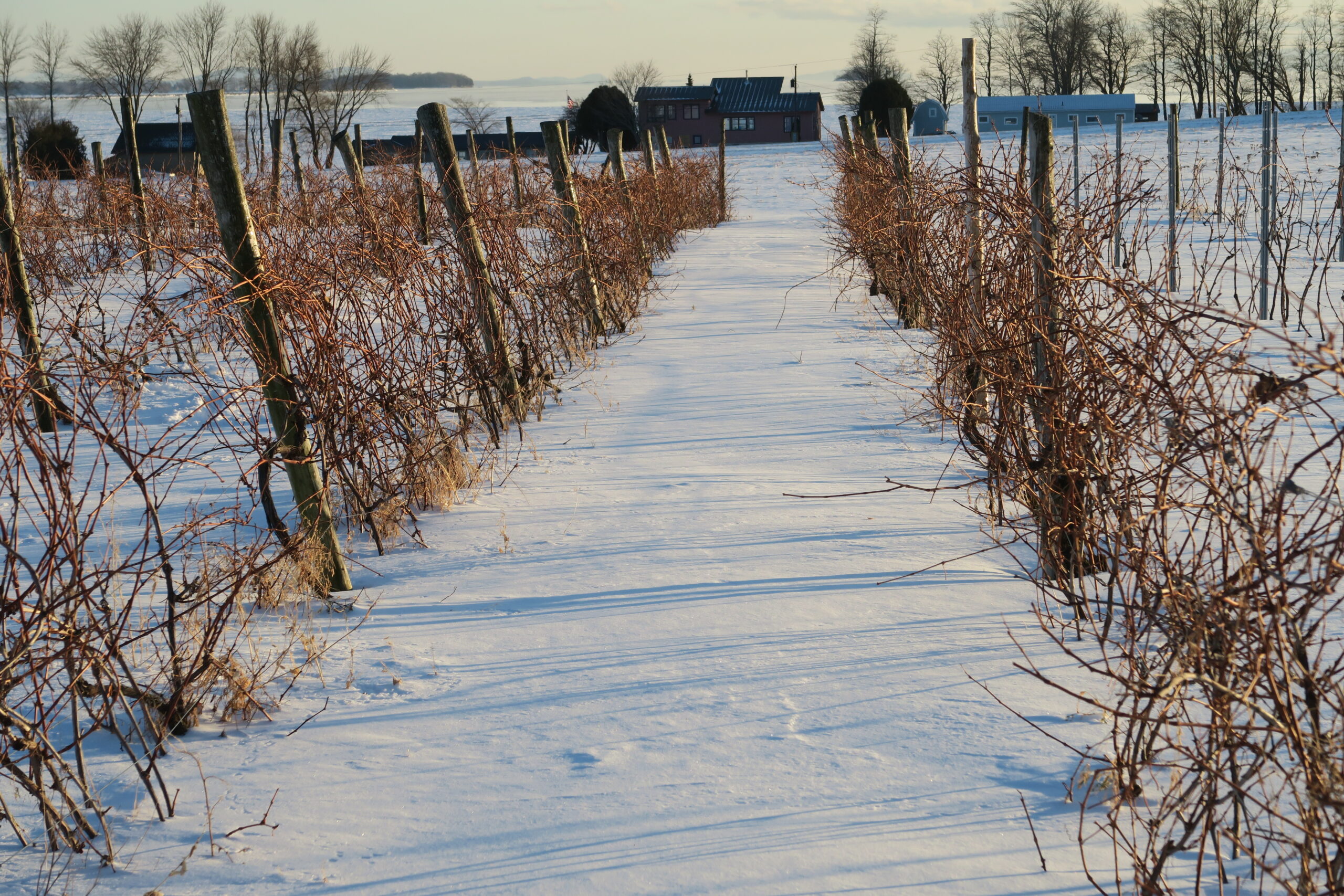
Snow Farm Vineyard planted it’s first grapevines in 1997 at our third-generation family farm in South Hero. We became the first vineyard to produce and sell Vermont wines commercially, with Boyden Valley Winery and Shelburne Vineyard soon to follow.
In 2004 Charlotte Village Winery began making Vermont wines. Lincoln Peak entered the Vermont wine scene in 2006, and North Branch Winery came along in 2007. Other vineyards have popped up along the way.
At Snow Farm, we started out making about 15,000 bottles of wine a year. The focus in the beginning was on experimenting with different types of French hybrid grapes to bring out a style that was unique to Snow Farm. Today, we’ve grown to offer 18 varieties of Vermont wine in classic and contemporary styles, and sell over 35,000 bottles a year.
Dedication to quality has put Snow Farm Vineyard wines regularly on the top shelf with multiple awards at international wine competitions. Our vines are in their element after 20-plus years of growth, and their quality and flavors are better and better every year.
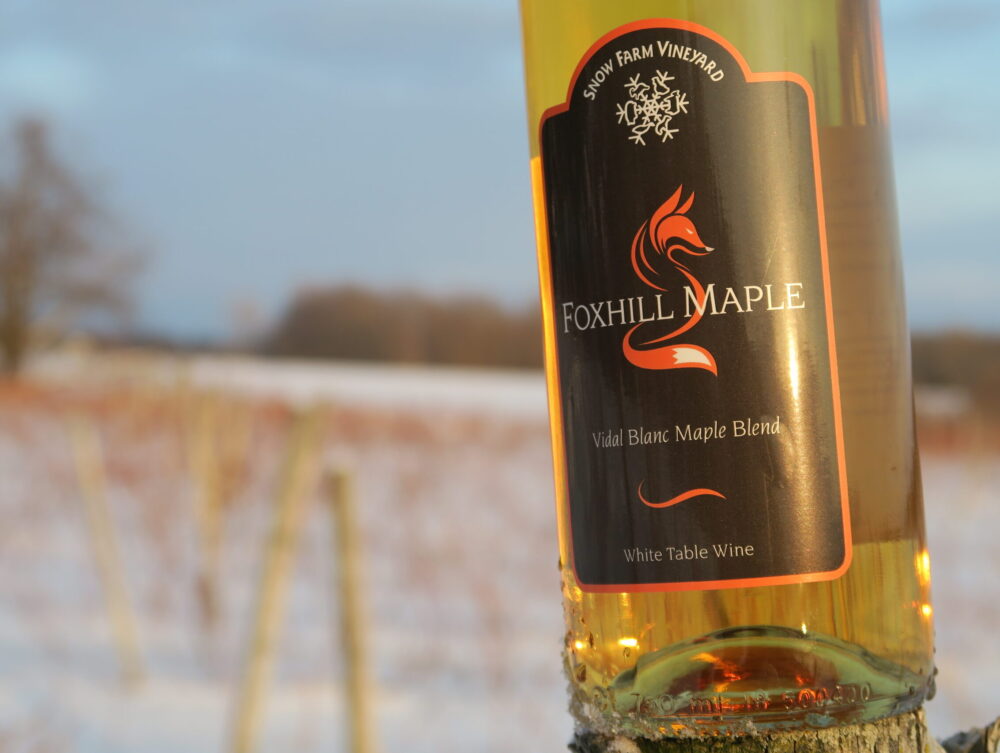
Vermont Wine Q&A
Whether it’s wine, beer, maple syrup, cheddar cheese or snowboarding…Vermont products are popular because they come with a story and a set of values. Vermont wines are unique because they’re made in a place that prides itself on preserving local agriculture, communities, and the environment.
If anyone knows more about the evolution of the Vermont wine scene it’s the team at Farrell Distributing. Nearly 90 years ago, Farrell became the first licensed beverage distributor in Vermont after prohibition. They’ve grown to become the leading distributor of high-quality beer, wine and non-alcoholic beverages to retailers throughout the state.
Jeff Baker is the Education & Training Manager at Farrell. He studied wine in Boston and published a book on the beer industry.
Ryan Chaffin is the Director of Marketing and Business Development.
Taylor Cameron, is the Fine Wine Brand Manager and a WSET Certified Wine Professional.
Q: How many Vermont wine brands did you start distributing and how many do you have now?
A: [Ryan] Snow Farm Vineyard and Charlotte Village Winery were two of our our first partners and still are today. The number of wines we sell has fluctuated slightly with the number of vineyards in business, but the core of the wine portfolio has been the same since we started. You’ll see a lot more varieties of wines at the winery locations than in the stores because of space limitations.
Q: How has Vermont wine evolved over the years?
A: [Jeff] For a long time Vermont wines were targeted toward tourists, and it was a style grouping of sweeter wines, including ice wines. Vermont wineries have grown, or progressed, into making dryer more technically serious wines in addition to ice wines.
A: [Taylor] We’re definitely seeing different styles and more varieties. There’s a move toward bringing in sparkling wines and an old method of producing sparkling wine called Pét-Nat. To do that you need a place that can grow a high acid grape with lower level of alcohol and Vermont is perfect for that. This also allows Vermont wines to be placed into other sections in the store – so there is more growth opportunity there.
Q: Where do you see opportunities for Vermont wine to grow?
A: [Taylor] Restaurants can be a driving force to get those wines in people’s glasses. Farmhouse Restaurant carries the Snow Farm Vineyard Crescent Red and Naked Mermaid because it fits with their commitment to local food production. Snow Farm also recently jumped into the draft wine world at restaurants (through kegs) which cuts out the cost of glass, cork and labels.
A: [Jeff] Another area for growth is building up social media & digital presence. They’ve heavily relied on tourists going to them. Now they have to go to the tourists, and take their message online.
Q: What are challenges Vermont winemakers face?
A: [Ryan] Price point is a challenging optical for Vermont wines. Vermont wines are typically a couple price points higher than something you would see from California and even France because of higher costs of production. VT Fresh Network is managing a Vermont wine project to help people understand Vermont wine and the true value it provides to our state.
A: [Taylor]: Vermont winemakers are growing the French and American hybrid varieties of grapes that grow well in colder climates, like the Vidal and Frontenac Gris. That can be a challenge because although these grapes are locally grown, they’re less well known than say your Pinot Noir or Cabernet, which don’t grow well in Vermont.
Q: What is the most important thing people should know about Vermont wine?
A: [Ryan] I want them to give it a chance, and I want them to know that one bottle makes a difference. One customer has the power to make a big impact on a small winemaker.
A [Taylor] Support local winemakers as they innovate to figure out the quality, complexity and interest, and develop their story. There is a lot Vermont wine can offer in the future – if we don’t support it and let it grow, we won’t see that possibility. We have to give it the chance to grow.
A: [Jeff] I always try to tell people Vermont wine isn’t just sweet wine anymore…there is a lot of dry table wine that is great for food pairing. Give it a second chance. If you bought Vermont wine at a gas station 20 years ago…it’s time to try it again because it’s changed so much. Keep your money local – these wineries are owned by families and worked by Vermonters.
